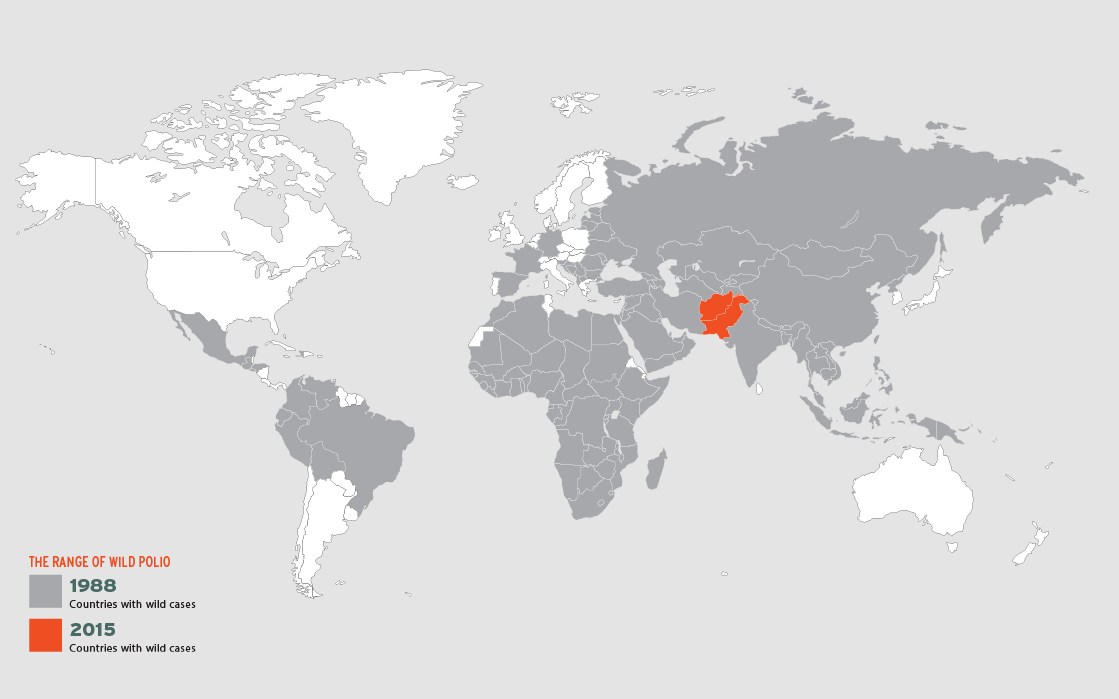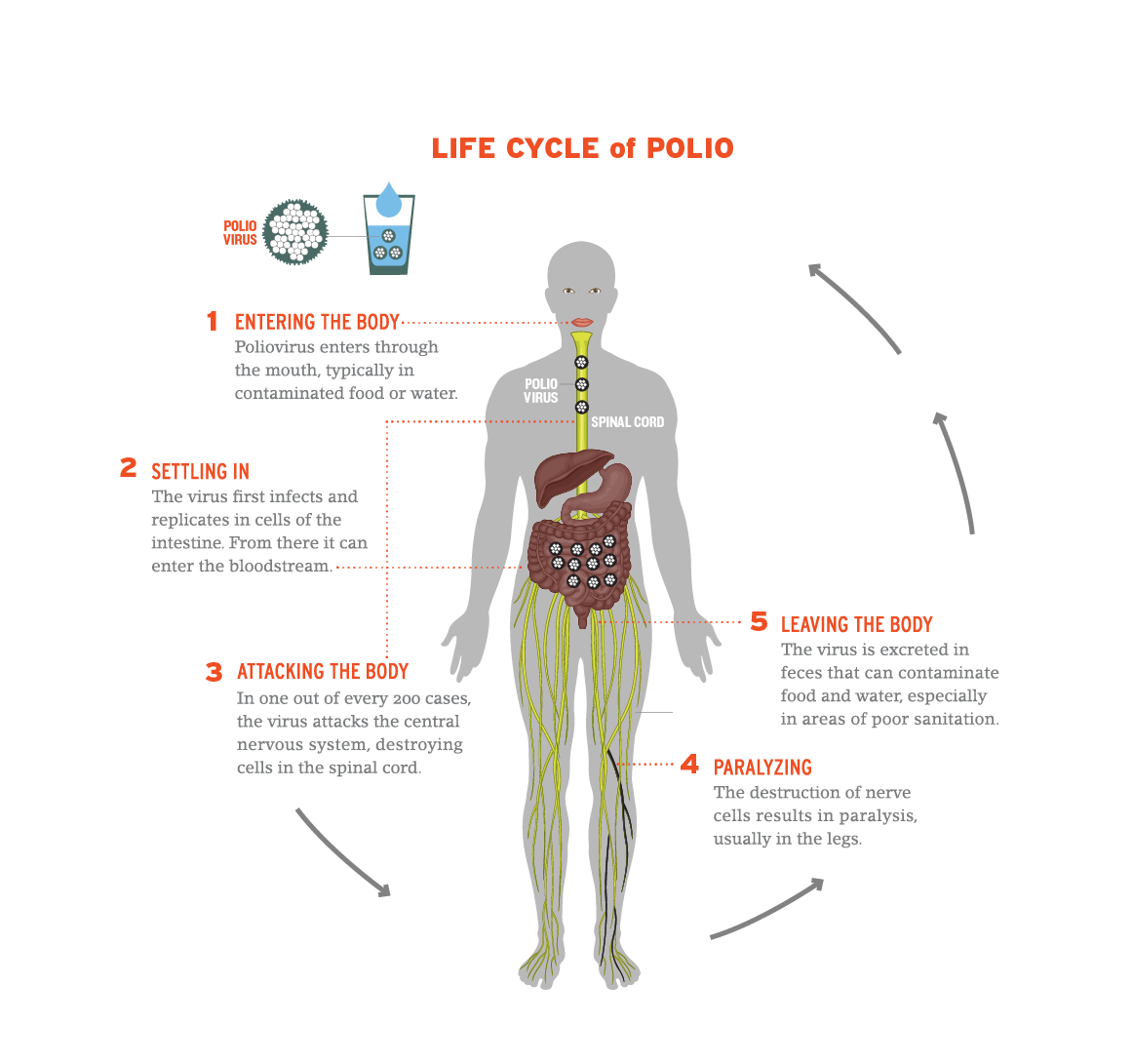Polio
What Is Polio? A potentially deadly virus that mainly affects children.
Symptoms: One in 200 infections leads to permanent paralysis, and 5 to 10% of those cases result in death.
Can It Be Eradicated? Yes, through widespread vaccination.
Status
Wild type 1 polio: Is still active, but on track for ERADICATION
Wild type 2 polio: Is ERADICATED
Wild
type 3 polio: Has STOPPED TRANSMISSION
This is the status of wild poliovirus; vaccine-derived cases still occur.
Endgame Challenges
Since 1988, polio has been eliminated in 122 countries. Only Pakistan and Afghanistan have never interrupted transmission of wild polio virus. New wild type 1 cases have recently appeared in the previously polio-free countries of Syria, Iraq, Cameroon, Equatorial Guinea, Ethiopia and Somalia.
Remaining cases of wild polio are type 1. Wild type 2 polio appears to have been completely eradicated (the last naturally acquired case was in 1999). Transmission of wild type 3 polio is believed to have been stopped.
The World Health Organization certifies polio elimination on a regional basis, and has certified the following regions free of wild polio:
Region of the Americas (1994); Western Pacific Region (2000); European Region (2002); South-East Asia Region (2014). The African Region and the Eastern Mediterranean Region have not yet eliminated wild polio.
The world has made extraordinary progress in its fight against polio—and it can be tempting to think the disease is no longer a problem. But as long as the infection exists anywhere, its ability to spread means it remains a global threat. To be fully eradicated, a disease must be eliminated in every town, village and neighborhood throughout the world.
Global efforts to eradicate polio began in 1988. By 2012, the campaign had reduced the disease to just a few hundred cases each year. But ongoing conflicts in endemic areas have slowed progress, and the disease has even made a return in places that were previously polio-free. We are at a critical point in the eradication process: while the end is in sight, failure now would quickly lead to thousands of new cases.
Polio’s Past and Present
Last Case of Polio in the Americas. Peru, 1994
In August 1991, two-year-old Luis Fermin Tenorio was paralyzed by polio. In 1994, after three years without any further outbreaks, Tenorio’s case of polio was confirmed as the last one in the Americas by the Pan American Health Organization, which serves as the regional office for the Americas of the World Health Organization.
Pan American Health Organization & World Health Organization
Polio’s Future
Transporting Polio Vaccine. Pakistan, 2011
Polio vaccine must be kept cold to remain effective. This can be a challenge when transporting the vaccine to remote regions of Pakistan.
UNICEF Pakistan/Asad Zaidi



